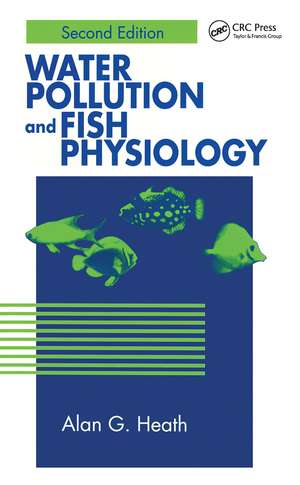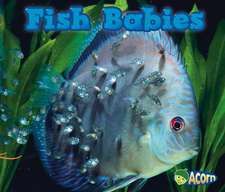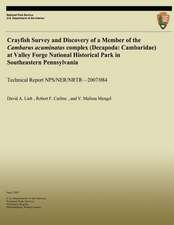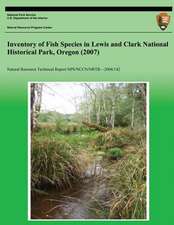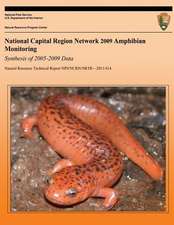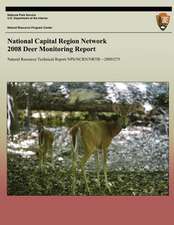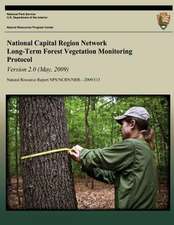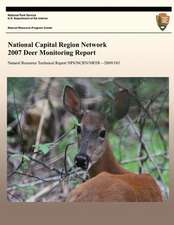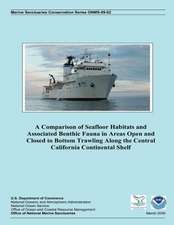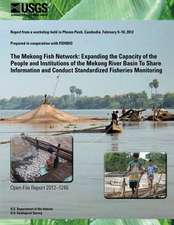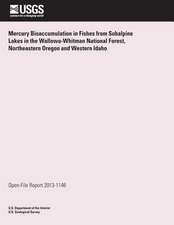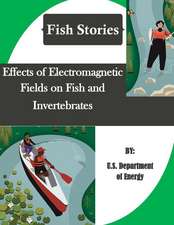Water Pollution and Fish Physiology
Autor Alan G. Heathen Limba Engleză Paperback – 2 dec 2019
The first chapter covers the basic principles involved in understanding how fish respond, in general, to environmental alterations. Each subsequent chapter is devoted to a particular organ system or physiological function and begins with a short overview of normal physiology of that system/function. This is followed by a review of how various toxic chemicals may alter normal conditions in fish. Chapters covering environmental hypoxia, behavior, cellular enzymes, and acid toxicity are also included. The book closes with a discussion on the practical application of physiological and biochemical measurements of fish in water pollution control in research and regulatory settings.
| Toate formatele și edițiile | Preț | Express |
|---|---|---|
| Paperback (1) | 462.69 lei 43-57 zile | |
| CRC Press – 2 dec 2019 | 462.69 lei 43-57 zile | |
| Hardback (1) | 1933.92 lei 43-57 zile | |
| CRC Press – 14 sep 1995 | 1933.92 lei 43-57 zile |
Preț: 462.69 lei
Preț vechi: 544.34 lei
-15% Nou
Puncte Express: 694
Preț estimativ în valută:
88.55€ • 92.10$ • 73.10£
88.55€ • 92.10$ • 73.10£
Carte tipărită la comandă
Livrare economică 14-28 aprilie
Preluare comenzi: 021 569.72.76
Specificații
ISBN-13: 9780367448929
ISBN-10: 0367448920
Pagini: 384
Dimensiuni: 152 x 229 x 20 mm
Greutate: 0.5 kg
Ediția:2nd edition
Editura: CRC Press
Colecția CRC Press
Locul publicării:Boca Raton, United States
ISBN-10: 0367448920
Pagini: 384
Dimensiuni: 152 x 229 x 20 mm
Greutate: 0.5 kg
Ediția:2nd edition
Editura: CRC Press
Colecția CRC Press
Locul publicării:Boca Raton, United States
Public țintă
Professional Practice & DevelopmentCuprins
Some Introductory Concepts: Types of Water Pollution. The Relationship Between Aquatic Toxicology and Fish Physiology. Levels of Biological Organization. Importance of Dose and Duration of Exposure. Stress. Toxic Mode of Action.
Environmental Hypoxia: Minimum Levels of Oxygen Required for Fish Life. Interaction of Hypoxia and Toxicity of Pollutant Chemicals. Gill vs. Cutaneous Respiration. Adjustments in Ventilation. Adjustments by the Gills to Hypoxia. Transport of Oxygen by the Blood. Cardiovascular Changes During Hypoxia. Respiratory Regulation and Conformity. Anaerobic Metabolism. Swimming Speed. Behavior. Blood and Urine. Histopathology. Acclimation to Hypoxia.
Respiratory and Cardiovascular Responses: Overview of Normal Respiratory Physiology. Histopathology of Gill Lamellae Exposed to Pollutants. Ventilation Changes in Response to Pollutants. Physiological Mechanisms of Changes in Ventilation. Circulatory Physiology. Cardiac Responses to Pollutants.
Hematology: Fish Blood Cells and their Measurement. Chemicals that Cause Anemia. Chemicals Causing an Increase in Hematological Variables.
Uptake, Accumulation, Biotransformation, and Excretion of Xenobiotics: Uptake from the Environment. Transport Within the Fish of Metals and Organics. Accumulation of Metals in Different Organs. Regulation of Metal Concentration. Glutathione and Metal Detoxification. Involvement of Metallothionein in Metal Accumulation and Acclimation to Metals. Bioconcentration of Organic Pollutants. Biotransformation of Organic Contaminants. Excretion of Organic Contaminants.
Liver: Structure of Liver. Alterations of Liver/Somatic Index. Histopathological Effects of Pollutants. Major Functions of Liver. Effects of Pollutants on Liver Function. Ascorbic Acid and Pollutant Exposure.
Osmotic and Ionic Regulation: Effects of Pollutants on Osmotic and Ionic Regulation. Mucus. Chloride Cell Proliferation. Some Summary Comments Regarding Osmoregulatory and Electrolyte Alterati
Environmental Hypoxia: Minimum Levels of Oxygen Required for Fish Life. Interaction of Hypoxia and Toxicity of Pollutant Chemicals. Gill vs. Cutaneous Respiration. Adjustments in Ventilation. Adjustments by the Gills to Hypoxia. Transport of Oxygen by the Blood. Cardiovascular Changes During Hypoxia. Respiratory Regulation and Conformity. Anaerobic Metabolism. Swimming Speed. Behavior. Blood and Urine. Histopathology. Acclimation to Hypoxia.
Respiratory and Cardiovascular Responses: Overview of Normal Respiratory Physiology. Histopathology of Gill Lamellae Exposed to Pollutants. Ventilation Changes in Response to Pollutants. Physiological Mechanisms of Changes in Ventilation. Circulatory Physiology. Cardiac Responses to Pollutants.
Hematology: Fish Blood Cells and their Measurement. Chemicals that Cause Anemia. Chemicals Causing an Increase in Hematological Variables.
Uptake, Accumulation, Biotransformation, and Excretion of Xenobiotics: Uptake from the Environment. Transport Within the Fish of Metals and Organics. Accumulation of Metals in Different Organs. Regulation of Metal Concentration. Glutathione and Metal Detoxification. Involvement of Metallothionein in Metal Accumulation and Acclimation to Metals. Bioconcentration of Organic Pollutants. Biotransformation of Organic Contaminants. Excretion of Organic Contaminants.
Liver: Structure of Liver. Alterations of Liver/Somatic Index. Histopathological Effects of Pollutants. Major Functions of Liver. Effects of Pollutants on Liver Function. Ascorbic Acid and Pollutant Exposure.
Osmotic and Ionic Regulation: Effects of Pollutants on Osmotic and Ionic Regulation. Mucus. Chloride Cell Proliferation. Some Summary Comments Regarding Osmoregulatory and Electrolyte Alterati
Descriere
This book provides a reasonably concise synthesis of what is known about how pollutants affect physiological processes in fish, providing a discussion of some concepts that are important in understanding pollution biology and fish physiology.
